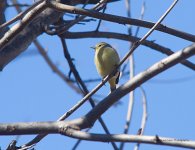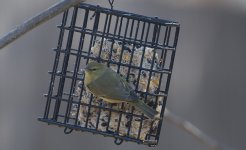The tail under color, white edged gray, is a vireo trait -- maybe a blue-headed which winter with you. The other is a palm, as you guessed
Blue Headed Vireo
Thanks guys. The Audubon people were there rattling off names and one of them said Blue Eyed Vireo. I couldn't find that anywhere. I thought I looked at all the vireos also, but guess not close enough.


